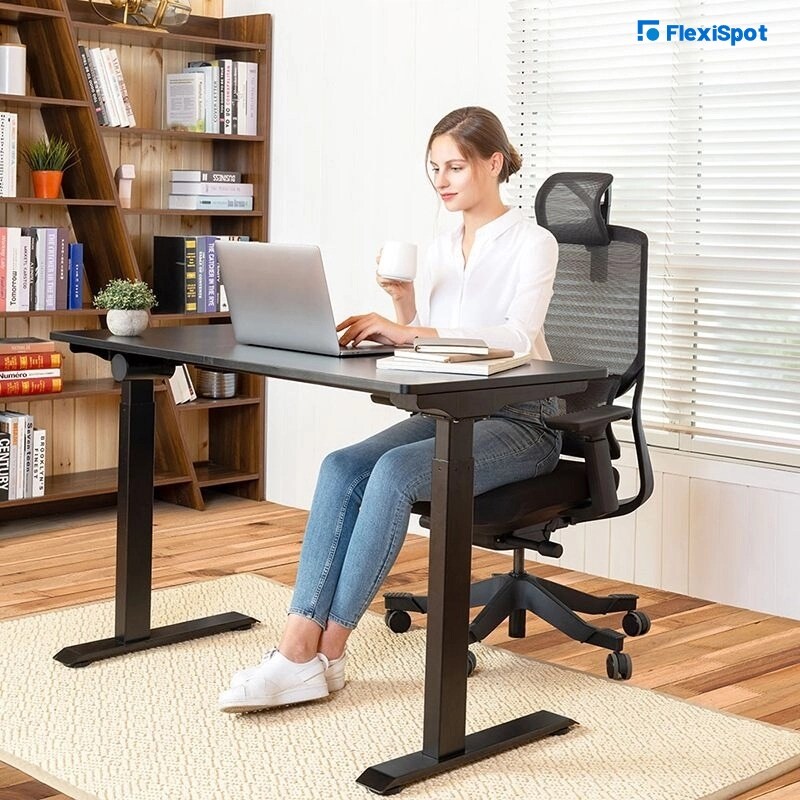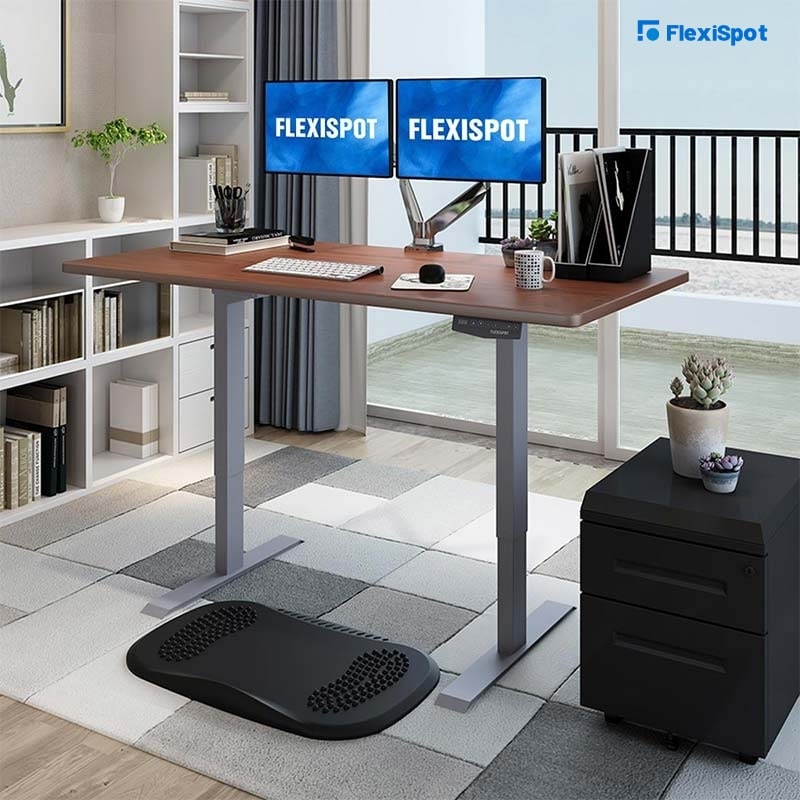In case you didn't know, your shoulder is made up of a few joints that are connected to various muscles and tendons. They're incredibly complex structures, and they're what allow you to do so many things with your arms. However, many people routinely suffer from shoulder injuries and the resulting pain precisely because of the shoulder's complex nature.
To be more specific, your shoulder is a ball-and-socket joint. It's made up of three bones: the long arm bone, the collarbone, and the shoulder blade. A layer of cartilage cushions each of these bones.
In many instances, shoulder pain can develop following many awkward, repetitive movements. In medical terms, this kind of pain is referred to as an RSI or "repetitive strain injury." It's also called cumulative trauma disorder, and these injuries are most often caused by repetitive motions you make while at work.
For example, common motions you might make that could cause such an injury are things like:
- Using the mouse on your computer
- Typing on your computer keyboard
- Swiping credit cards

Symptoms of Shoulder Pain
Quite a few different things can cause the symptoms of shoulder pain. Each cause has symptoms that are not quite the same as the others. However, depending on what's causing shoulder pain, symptoms may include the following:
- Lack of movement due to pain (injuries to nerves or a torn rotator cuff could be the culprit)
- A feeling of "pins and needles" or burning pain
- Weakness in the shoulder
- Deep pain in the shoulder joint, often felt either in the front or the back of the shoulder and perhaps the upper arm
Causes of Shoulder Pain in the Office
As with most RSIs, shoulder pain usually develops slowly and over time. However, some known causes are things such as:
- Bad posture
- Working with your arms above the level of your shoulders (e.g.; typing while sitting in a chair that is in a low position compared to the desk)
- Mechanical contact stress (e.g., typing while resting your wrists on the edge of a desk)
It's important to note that other things can cause shoulder pain, such as:
- Heart attack
- Dislocated shoulder
- Frozen shoulder
- Broken shoulder
- A pinched nerve in the shoulder or neck
- Bone spurs
- Swollen tendons
- Torn rotator cuff
- Torn cartilage
- Arthritis
Regardless of the underlying cause, it is always recommended that you see a doctor and get an official diagnosis.

Ways To Prevent Shoulder Pain
Whether sitting or standing, you should always keep your body in a relaxed, natural position. That means you should keep your elbows even with your desk. Maintaining proper posture is essential. You don't want to be hunching your shoulders or scrunching over your keyboard.
If you're sitting, remember to do the following:
- Put your feet flat on the floor.
- Push your hips back in your chair.
- Keep your forearms, wrists, and hands straight in front of you.
- Pull your elbows in close to your body.
- Be sure not to round your shoulders. Instead, relax them.
If you're standing, be sure not to slouch or hunch over your desk. As much as possible, you'll want to stand straight and tall. If possible, you should also stand on a soft surface such as an anti-fatigue mat.
Pay attention to the kind of shoes you wear. Standing for long periods in shoes one wears with a suit or wearing high heels isn't good for long-term posture.

Switch Things Up
You can try to change things up so that you're not continuously repeating the same motions over and over again. For example, you might try moving your mouse to the other side of your computer. It might seem weird to use the mouse with your non-dominant hand, but it can help alleviate shoulder pain that occurs on only one side.
You can also experiment with varying your routine. In other words, don't always follow the same schedule day in and day out. Go grab a cup of hot tea when you would typically check email. Go for a walk when you'd normally be standing at your desk returning phone calls, etc.
Speaking of walking, be sure to take a break every 30 minutes or so. Every few hours, take a more extended break and go for a walk. Jump up and down. Shake out your arms and legs. You might also want to invite a friend to walk and talk with you while having some lunch.

Do Shoulder Exercises
Doing physical exercise that requires you to stretch your shoulder muscles can also help to reduce shoulder pain. Here are just a few you should try.
- Desk Angels: While sitting straight in your chair, hold out your arms at shoulder level and bend your elbows at a 90-degree angle. Keep your head and your body still while moving your arms over your head. Reach for the ceiling. When you do, attempt to ensure that your arms line up with your ears. Then return to your beginning position. (You may feel some pulling in the middle of your back or hear your back pop. It's nothing to worry about.)
- Upper Trapezius Stretch: With your back kept as straight as possible, tilt your head sideways as if you were trying to lay it down on your shoulder. To stretch a bit harder, drop your shoulder on the opposite side toward the floor simultaneously. Hold this position for 10 seconds and then repeat on the opposite side. You'll want to do this same set of motions at least twice.
- Shoulder Rolls: As with the other exercises mentioned here, you'll want to keep your back straight. Tuck your chin in and begin to roll your shoulders in a circular motion. Forward, up, back, and down. Repeat the circular motions 10 times and then reverse direction for another 10 repetitions.

Use a Standing Desk
Another way to help prevent shoulder pain is to start using an adjustable standing desk like Flexispot's Electric Height Adjustable Standing Desk EN1 - 48" W. You see, when you use a standing desk, not only does your posture improve, but your leg muscles, back and core are all engaged.
When you stand, it forces you to use muscles that are rarely engaged when sitting. Moreover, when you sit, it's just too easy to slush and slump over your desk and keyboard. When you do that, it weakens your neck and back muscles, which in turn could lead to a shoulder injury.
In contrast, when you use a standing desk like the EN1, you increase the overall activity of your neck, back, and hip muscles, which helps prevent those muscles from weakening. In fact, your entire spinal column could benefit from the improved posture you'll enjoy by using a sit-stand-work desk.
The EN1 is designed so that your eyes are level with your computer screen. You won't need to look down, which can cause your shoulders to hunch up and harm your neck muscles over time. Again, when muscles in your neck and back become weak from overuse and strain, it can result in shoulder pain.
Another benefit of using the EN1 is the fact that it's made so that you can perfectly adjust its height (between 71-121cm) so that your arms are placed on top of the desk when you type in a position that's parallel to the floor. This also helps to improve your posture, which can do a lot to alleviate shoulder pain.
However, standing all day isn't the solution to avoiding shoulder pain in the office either. Instead, alternating between standing and sitting is the best option. In fact, you can quickly go from sitting to standing and back again since the EN1 is equipped with a powerful dual motor with a lifting speed of 2.3cm per second. Moreover, when you alternate between sitting and standing throughout your workday, you can improve your overall health.
To top it off, the EN1 can even provide you with convenient sit-stand reminders through its advanced keypad! This is an incredible benefit because standing and sitting at irregular intervals (e.g.; basically sitting all day and then standing for a half hour or vice versa) could cause you to run the risk of developing the very kind of shoulder, back, leg, and foot pain you were hoping to avoid.
By setting reminders for yourself through the EN1, you can ease into standing for longer and longer periods throughout the day until your muscles are strengthened enough for you to stand for a longer period with no problem. A best practice is to experiment with reminders until you discover a sit-stand-work schedule that works for you.
Conclusion
Shoulder pain can occur to anyone in relation to their work. That's especially true for people who work in offices all day and who repeat particular motions continually. To help reduce your risk for a shoulder injury and the pain that is sure to result, modify your work habits and use a height-adjustable standing desk.
You'll want to buy one like Flexispot's EN1 that offers flexible height adjustment with the push of a button.
Remember too that some companies demand a doctor's note if you ask for a standing desk. However, if you experience chronic shoulder pain, neck pain, or back pain, you shouldn't hesitate to talk to your boss about obtaining one!

